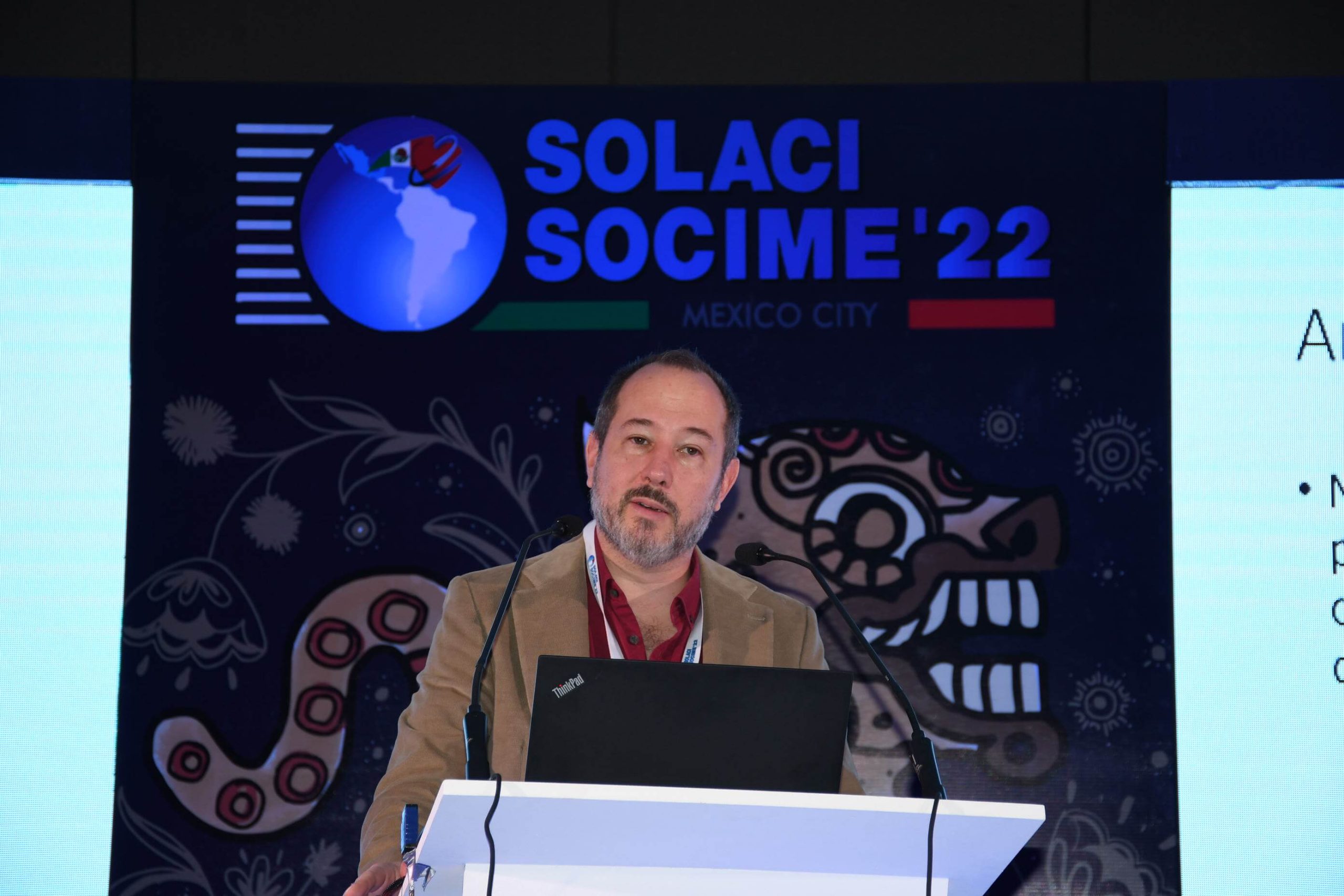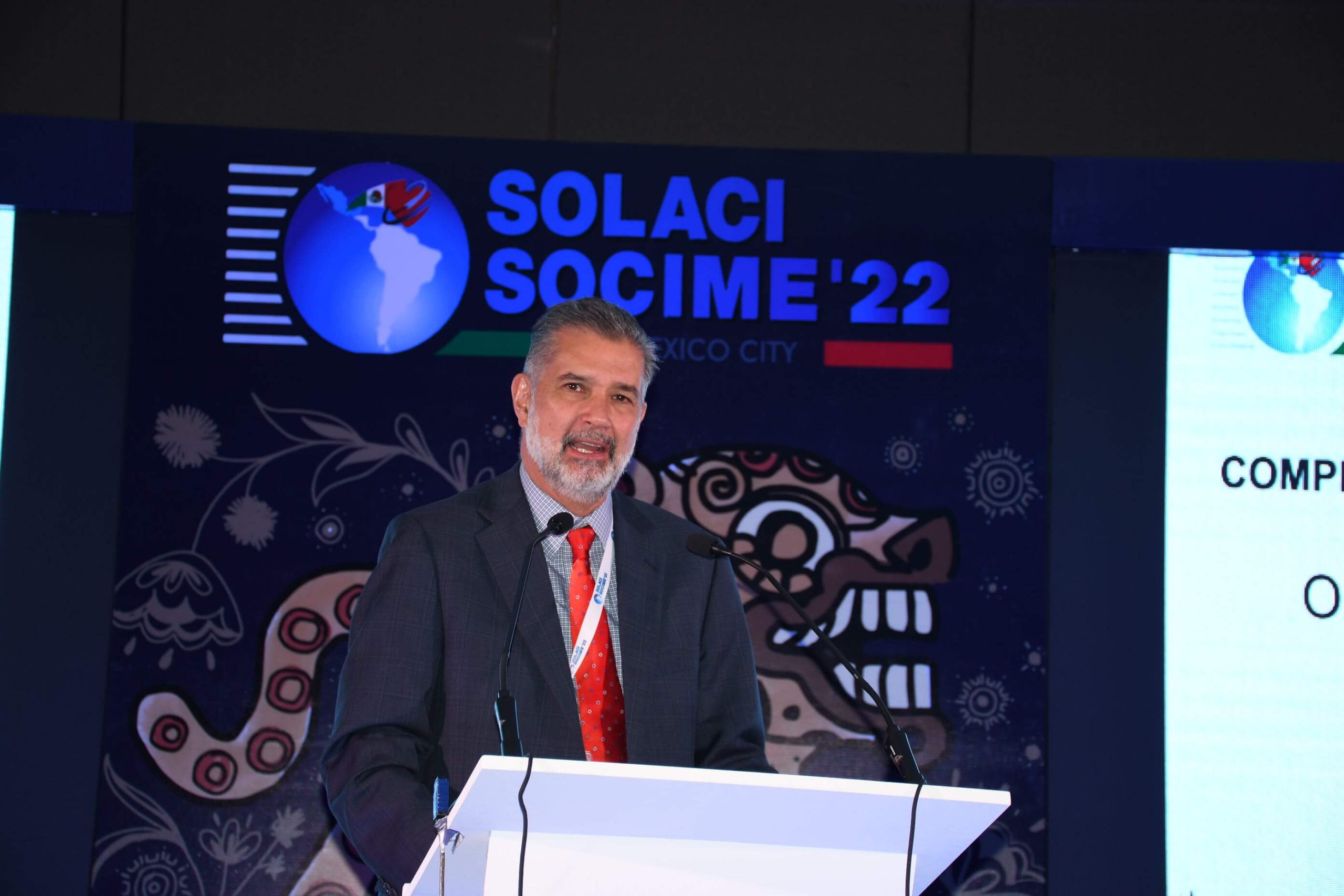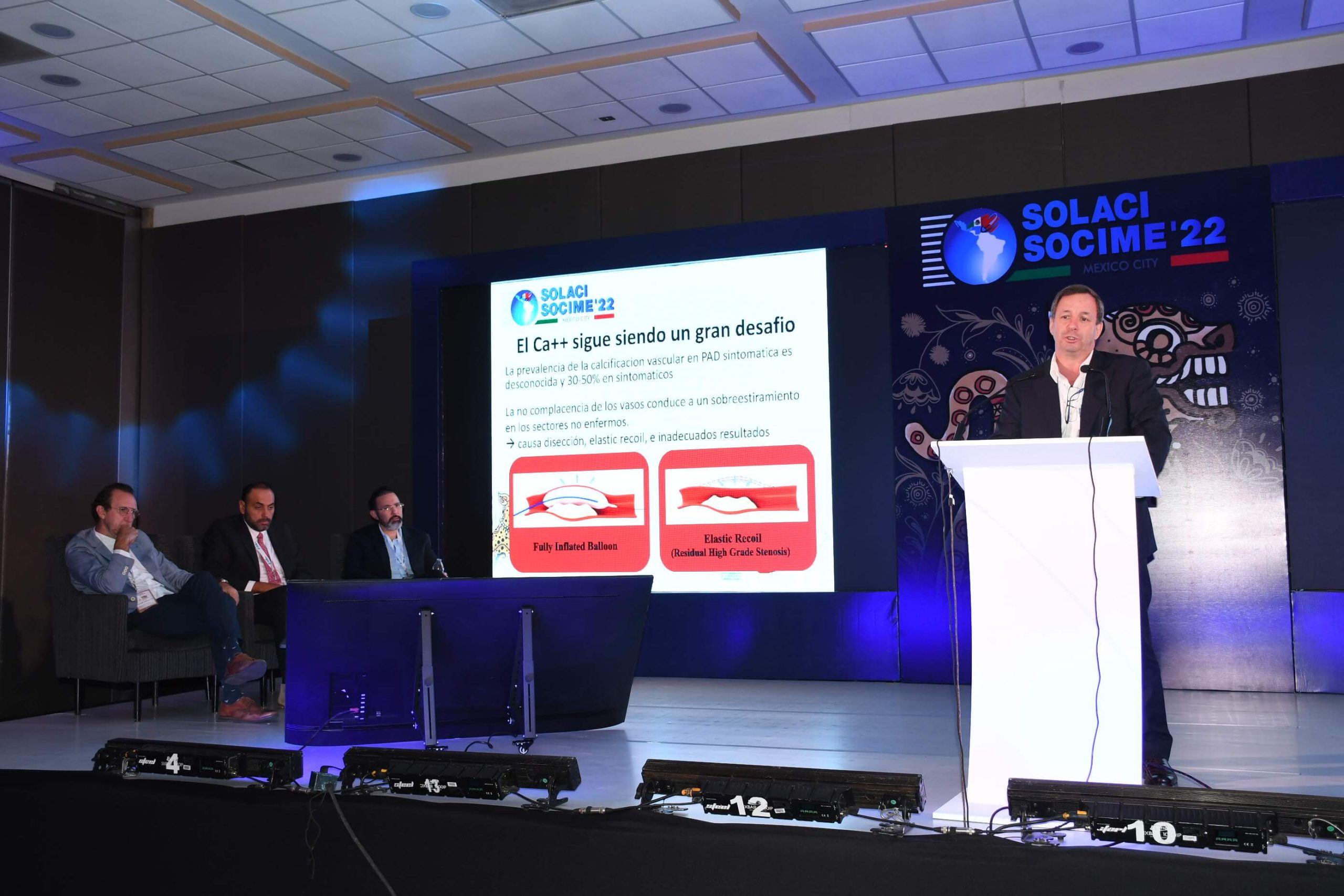Lecture by Dr. Hector García García – LM-PCI: IVUS and FFR/IFR?
Dr. Hector García delivered an excellent presentation on whether we should use intravascular ultrasound (IVUS) or fractional flow reserve (FFR)/instantaneous wave-free ratio (iFR) in the left main coronary artery (LMCA) to consider severe obstruction, since there is significant interobserver variability with angiography.

Although the currently used classic criterion is that areas >6 mm2 are not considered severe, physical build has an impact. He showed us that, in Asian populations, the minimum luminal area should be <4.5-4.8 mm2 to be classified as “severe,” while in US populations the measurement should be <7.5 mm2.
Physiology, whether by FFR or iFR, is constant because it is influenced by physical build and should be used in cases of doubtful lesions the same way we perform IVUS: first from the DA to the LMCA, and then from the CX.
Dr. García also emphasized that physiology and IVUS should be used together and not on a mutually exclusive basis, since IVUS allows for the identification of lesion characteristics and follow-up after angioplasty. However, he highlighted that physiology (though studies on IVUS are scarce) has demonstrated its efficiency and efficacy in deferring lesions, and it can also be used to analyze the final result of angioplasty, especially when we do provisional stenting in the circumflex artery.
Lecture by Dr. Carlos Uribe: DK CRUSH or Provisional Stenting?
Dr. Uribe discussed whether provisional stenting or DK CRUSH is better for left main coronary artery (LMCA) bifurcation lesions.
The advantage of provisional stenting is that it is a simpler and faster technique for single stent implantation. In that sense, it can be converted if necessary.

Dr.Uribe made an interesting comparison between the EBC MAIN and the DK CRUSH V studies: while both yielded similar results, when analyzing the complexity of the side branch, the CX, the lesions in EBC MAIN were simpler, which surely influenced the results. Also of note, Culotte was the most frequent strategy in this study, with only 5% DK CRUSH.
Dr. Uribe mentioned that being aware that at some point during the provisional stenting all control over the secondary branch is lost is paramount. This is so because, if there is severe obstruction or occlusion—or a significant decrease in flow after stent implantation—, the procedure could become complicated, with significant difficulty for stent advancing.
Dr. Uribe noted that, when performing a TAP, we should consider that achieving good new neocaridin is not always easy, which can have an impact on acute occlusion—which, although rare, can have an impact on restenosis.
This makes DK CRUSH the current strategy of choice when implanting two stents in the LMCA bifurcation, as it favors coverage of all bifurcation areas without losing control of the secondary branch. Additionally, current evidence supports it, and bifurcation guidelines state it should be the first strategy for LMCA disease.
Disadvantages include it having more steps that cannot be skipped and requiring extensive operator experience.
Dr. Uribe concluded that these techniques do not compete with each other but are complementary. Each patient must be analyzed individually to define the strategy to be followed.
In other words, according to the EBC Main study, a simple bifurcation lesion calls for using one stent, while DK CRUSH indicated the implantation of two stents for complex bifurcation lesions using the DK CRUSH strategy.
Lecture by Dr. José Luis Leiva Pons: Optimal Antiplatelet Anti-Aggregation in LM-PCI
Dr. José Luis Leiva Pons gave an update on antiplatelet therapy in left main coronary artery (LMCA) angiography.
It is important to recognize that, within the first 30 days, our main concern is thrombotic risk; after this period, hemorrhagic risk appears.
Dr. Leiva Pons added that it is important to know the context where the procedure was performed, whether it was scheduled or due to an acute coronary syndrome, with or without ST-segment elevation.

We must also analyze the different risk factors that favor bleeding, namely age, renal failure, cancer, and previous bleeding (generally in the digestive system), among others.
As we know, angioplasty in the LMCA is, by definition, a complex angioplasty, and the European guidelines recommendation is dual antiplatelet therapy (DAPT) for >6 months.
Prolonged DAPT vs. simple antiplatelet therapy (SAPT) demonstrated the same thrombotic risk, but more bleeding events.
Thrombotic risk is related to the type of stent used (the most modern stents showed less thrombosis), the strategy used in the procedure, and the use of imaging during the procedure.
Dr. Leiva concluded that we should weigh the thrombotic risk and the bleeding risk against each other, plus follow-up control, and, based on all this, decide the best antiplatelet strategy for each individual case.
Lecture by Dr. Alejandro Goldsmit: Rotablation in Superficial Femoral Angioplasty
Dr. Alejandro Goldsmit shared important information on how to treat severe luminal calcification in arteries with rotational atherectomy in femoro-popliteal disease.
The objective of this strategy is to better prepare severely calcified atherosclerotic plaque to favor a better outcome and decrease complications accompanied by greater patency.
While initial studies did not demonstrate a benefit versus balloon angioplasty, these studies did not include—or included only a few—patients with severe calcification in the 360° of the arterial lumen.

In the DEFINITIVE LE study, which included 800 patients, the success rate was 89% with a low complication rate and a stent bail out of 3.2%.
A study by Bai et al. that included 38,884 patients compared rotational atherectomy vs. balloon angioplasty and angioplasty with stenting (bare metal, drug-eluting, or lined stents). Atherectomy had a higher success rate and fewer days of hospitalization, but a higher embolization rate (2% vs. 1.1% p = 0.01), with no differences in mortality or other complications.
At the one-year follow-up, atherectomy had a better ankle/brachial index, better patency, and greater survival, as well as a non-significant increase in reinterventions with no difference in amputation.
In two other analyses with almost 7000 patients which compared atherectomy vs angioplasty with stenting, using a stent was associated with fewer amputations, and there was no difference in other events or patency.
According to the 2018 guidelines from the Society for Cardiovascular Angiography and Interventions (SCAI), rotational atherectomy should be used as plaque preparation therapy in femoro-popliteal disease with Class IIa Level C evidence.
Fanelli et al. showed that plaque preparation and drug-eluting balloon (DEB) use decreased target lesion revascularization (TLR).
Dr. Goldsmit concluded that it is a safe and very useful adjuvant therapy for selected complex cases when preparing severely calcified plaque.
Subscribe to our weekly newsletter
Get the latest scientific articles on interventional cardiology





